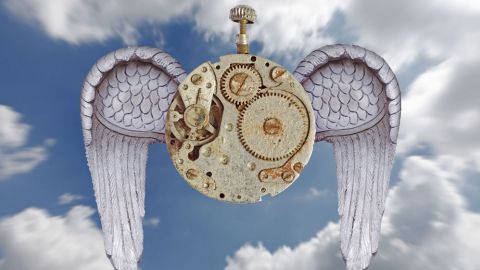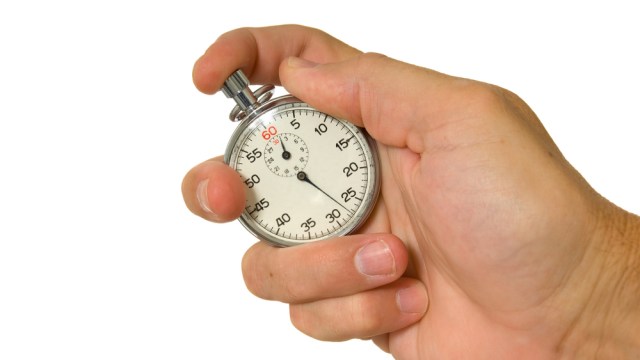How We Confuse Time and Space

The whole history of physics has been a history of diminishing the nature of time and diminishing the role of time. Take a very simple example. When you see something move through the air – that’s something that happens in time. And then you could take a film that you made of that and call that an experiment or call that a record of motion. And then you could make a graph in which time ran this way and the position on the screen ran this way. And that would be just a curve. The record of that motion would be represented by a curve which would be a graph of X against time.
That is a method which is highly useful for describing the results of observations made in the past. But people have gone too far with it. We have what’s called geometricized time in taking the view that maybe that curve which is the whole history of that motion just is really what is. And the fact that it got carried out moment by moment by moment by time is an illusion. And so we’ve confused in physics the representation of observations of reality which are frozen because they are records. They are ways of organizing the information in records which are frozen in time because once the observation is over, the record is frozen in time.
We’ve confused that with the reality and argue to an invalid conclusion. It’s not just that the record of motion is frozen in time and is outside of time therefore, but the actual history of the world, the actual motion is outside of time in its deepest reality. So by making graphs in which time was represented as if it were a dimension of space, we confuse time and space. Now in my book I recount the history if this, which starts in the seventeenth century with Descartes and Galileo. And then Newton avows to the point where Einstein invents the general theory of relativity where you have what’s called the Black Universe picture in which the whole space time exists at once.
Einstein is quoted as saying, “We physicists, we who understand science know that the distinction between past, present and future’s an illusion.” And he wrote that trying to give consolation and comfort to the widow of a friend of his who had just died as if to say really the impression we have of being alive for a brief time and then not being alive and the tragedy of that is wrong. It’s not a tragedy because we just live and exist in time timelessly, so to speak. All the moments of our life just exist and it’s an illusion this idea that we’re eating them up, that we’re passing through them. And Einstein having consoled a friend of his also at about the same time in a conversation with a philosopher, Rudolf Carnap, regretted that the moment the feeling of being in the moment, the present moment is missing from that representation of motion, that representation of the universe.
And Einstein regretted it. He said that there’s something irretrievably lost. That the experience of the present moment is somehow just outside of the domain of science. Over the last 20 or so years since the early 90s I’ve come to the view that we have to put time and the present moment and the passage of time into the center of physics and reinvent a way of doing physics in which the present is really what’s real. At any moment what’s real is what’s real in that present moment.
And the past is unreal but we know things about it because they’re representations of it, fossils of it, records of it in the present. Memories of it, of course. And the future is also unreal but we don’t even have memories or fossils of it so it’s genuinely unreal. So statements like “In 2080 it will be six degrees warmer than it is now on the average on the globe” – which are hypotheses that people discuss – don’t have a present truth value. They’re not true and they’re not false. They’re just undetermined because 2080 is in the future and there’s nothing that exists now which corresponds to the reality of how warm it will get by 2080.
In Their Own Words is recorded in Big Think’s studio.
Image courtesy fo Shutterstock





